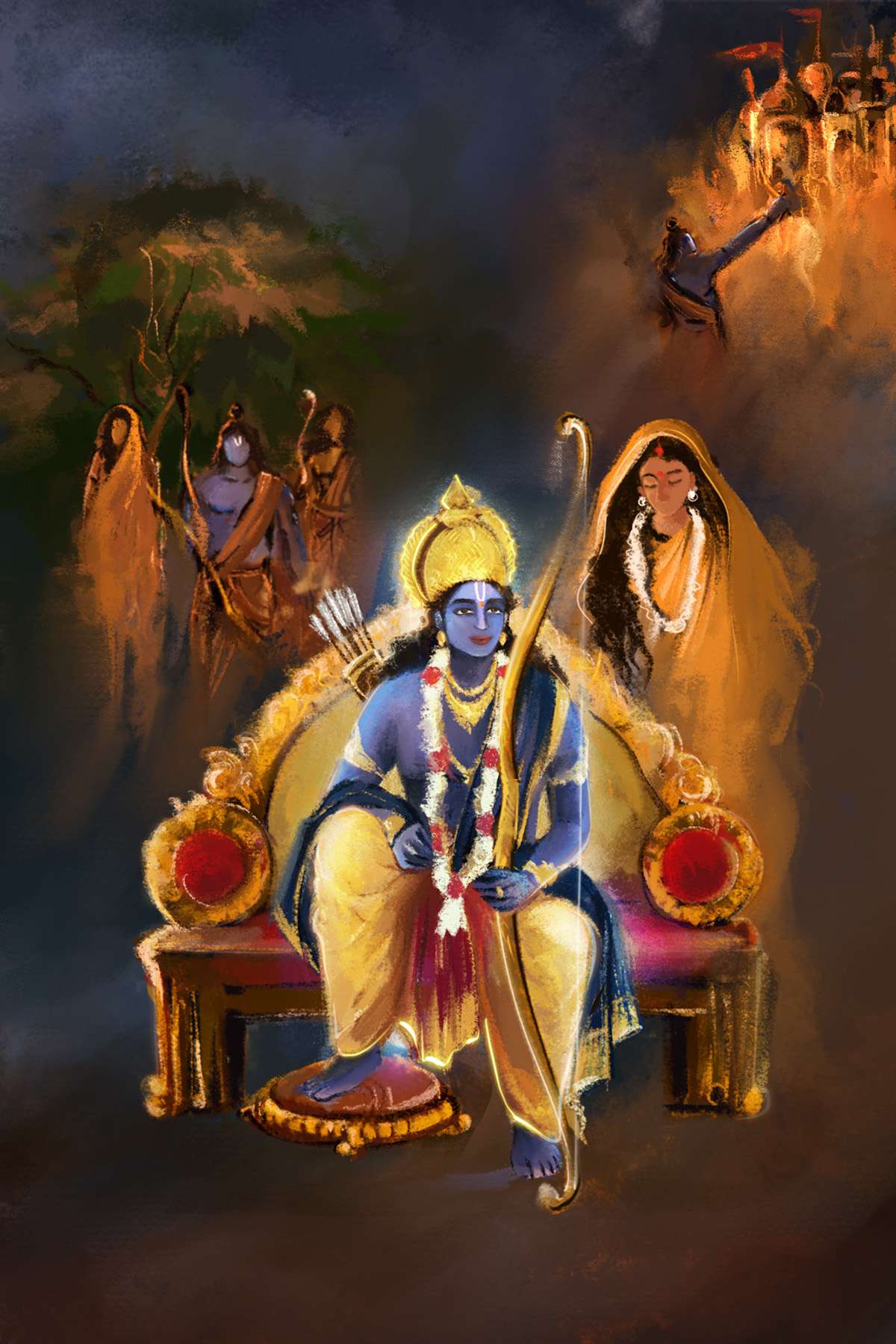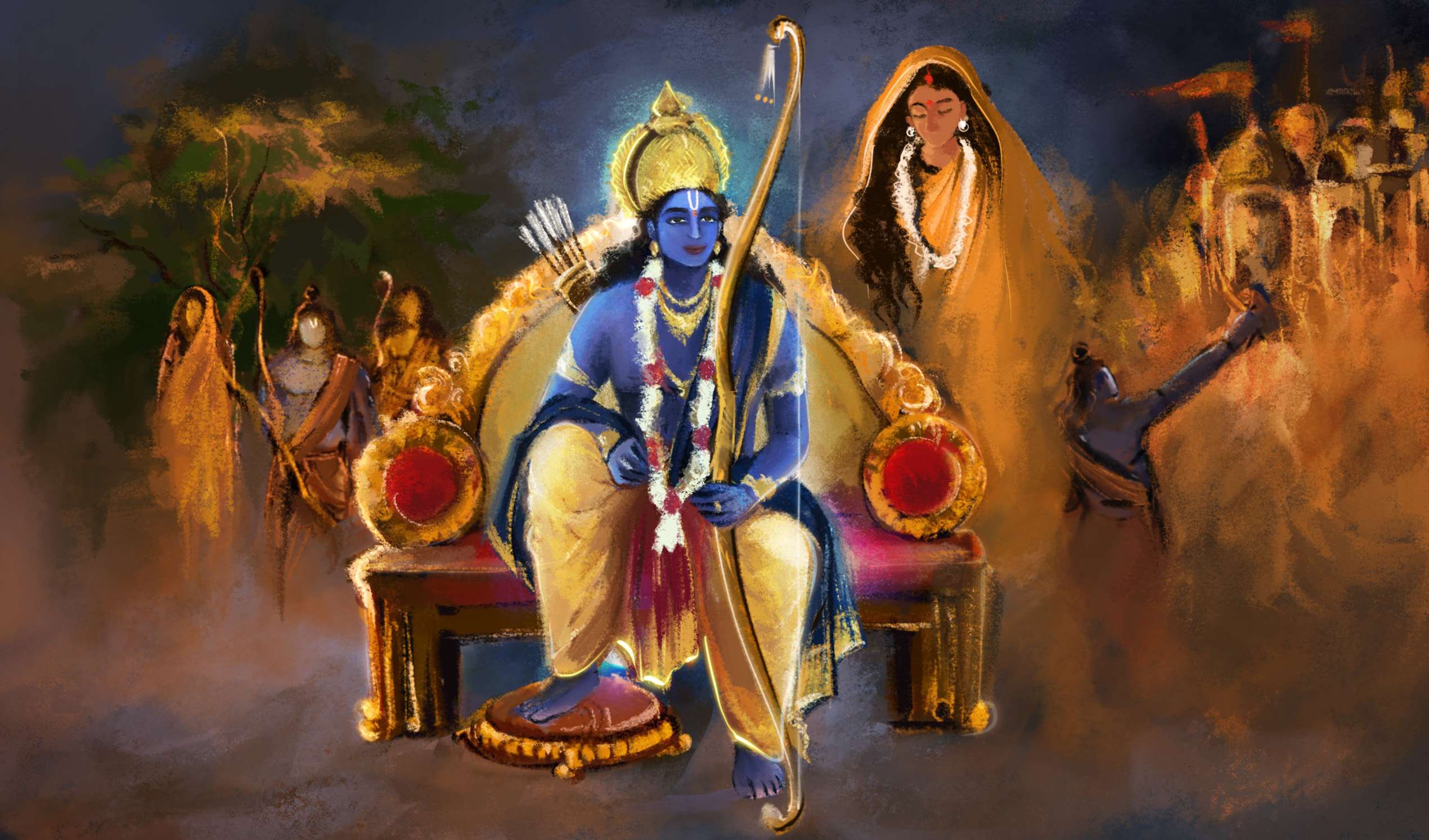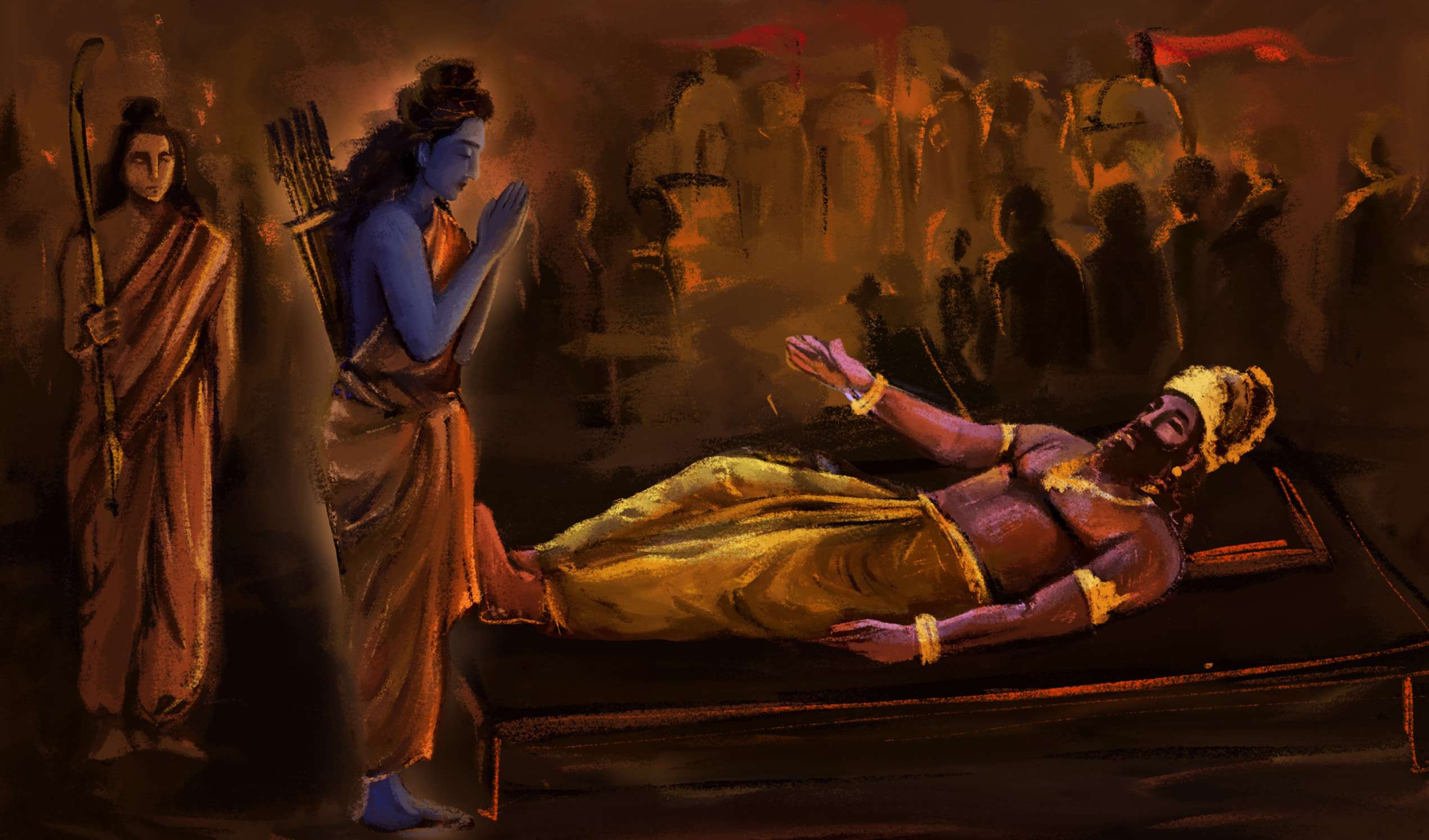



As the consecration of the Ram Mandir in Ayodhya ignites the hearts of devotees from far and wide, Sadhguru shines a spotlight on the remarkable life of Rama. Read on to find inspiration in Rama’s quintessential equanimity and wisdom amidst relentless adversities and dichotomies of existence. This story invites us to perceive our world with clear vision and make choices that enhance our shared existence.
Sadhguru: Maryada Purushottam Rama is in many ways the most popular man in India today. When so many sages, saints, and Yogis have been there, why is there so much focus on him? Many others lived more or less withdrawn lives, but they were fully resolved. The significance of Rama is this: His life was a serial disaster, including every kind of trouble. That is why people refer to him as Maryada Purushottam, a superior human being. Here, it is not about gods descending from heaven. This is a civilization where human beings can rise to become divine.
When he was 19, he was coronated as a king. Within a year or so, he was deprived of his kingdom and exiled into the jungle, along with his bride. Seeing that it was going to be a very tough time for them, his brother volunteered to come along. As if the jungle exile was not enough, his wife was abducted. As a king, he could have taken another wife, but he was not made like that. He loved his wife immensely, enough for him to walk over 3,000 kilometers.
In those times, there were no Google Maps – you did not know where Sri Lanka was. Rama had to simply walk down south, asking people where it was. Then he saw that there was no other way but to fight a war. He did not have an army, just one brother. He built an army in the south, went on to wage a war, burned down a beautiful city, killed the man, and got back his wife.
Then Sita got pregnant. For a king, his wife being pregnant is very important. It is not just about his fatherly emotions; it is about progeny for the nation. Still, Rama had to send his pregnant wife to the forest once again because of some civil situations, and she delivered twin boys. Unknowingly, he ended up in a battle facing his own sons. He almost killed his own children, not knowing they are his. In your physical life, to knowingly or unknowingly kill your own child is one of the most terrible things you can do. Rama never got to see his wife again; she died in the jungle.
If any one of these situations happened in their lives, most human beings would crack up. But in spite of this series of disasters, Rama never became frustrated, angry, anxious, or hateful. He always remained equanimous. Whatever personal pains Rama faced, he did what he had to do in the world; nothing more, nothing less.


He killed his enemy who abducted his wife, came back, and repented for one year in the Himalayas. His brother was furious, “What? You’re repenting killing that man?” Rama said, “There were many evil qualities in him; but he was a great devotee of Shiva, like me.” Rama established the Rameshwaram Linga[1]. He continued to say, “And not only that – he is a very knowledgeable man, a great scholar, and a great administrator. He built one of the greatest cities of those days.”
So, when Ravana was grievously injured, Rama sent his brother Lakshmana to go and learn about administration and engineering of a city from him because they wanted to rebuild Ayodhya. It is a 6,000- to 7,000-year-old dream – today, it is being built. When Rama told Lakshmana to go and learn from Ravana how to build and administer a city like this, Lakshmana said, “What? We want to learn things from this wretched guy?”
Your judgments about who is good or bad do not matter. What someone knows is of the highest value. This is the embodiment of this culture. So, Lakshmana went and looked down at Ravana with a little bit of glee that he was lying there, grievously injured. He stood near Ravana’s head and said, “Hey, tell me something about administration and engineering of a city.” Ravana turned his head away.
Lakshmana went back to Rama and told him, “He refuses to speak to me.” Rama looked at him and said, “You be here.” Then Rama went himself, stood at Ravana’s feet, bowed down to him, and said, “I wish to learn all the arts you know. Because you are dying and I will live, your knowledge should be passed on to the people, and they should benefit from it.” So, Ravana gave a whole treatise on how to build and manage the city, how to make sure people never starve in a given kingdom, and many other aspects.
Rama was grateful for what he learned from Ravana, and he repented for one year for having killed that man. This is what we need in the world today. Not absolutisms of “You are wrong – I am right. I am good – you are bad. This is a stupid way of living. Everyone is a mixed bag of qualities. If you know, you can pick the best things. If you do not know, you may pick all the bad things. Even if you go to a mango tree and just grab any fruit and eat it, you may end up eating worms.
You must know how to pick the best fruit; otherwise, you will eat all the wrong things. This is true with every aspect of life. Wherever you go, there will be something wonderful, and there will be something rotten. What you pick makes you who you are. If you pick all the right things that enhance life for yourself and everyone around you, then people will call you “Maryada Purushottam.”
What makes a human being pick the right things? I do not even want to use the word “right.” What makes a human being choose what works rather than what does not? Clarity of vision. You must be able to see things as they are, not as you want them to be.
[1] One of the twelve Jyotirlingas; located in Rameshwaram, Tamil Nadu, on an island between peninsular India and Sri Lanka.